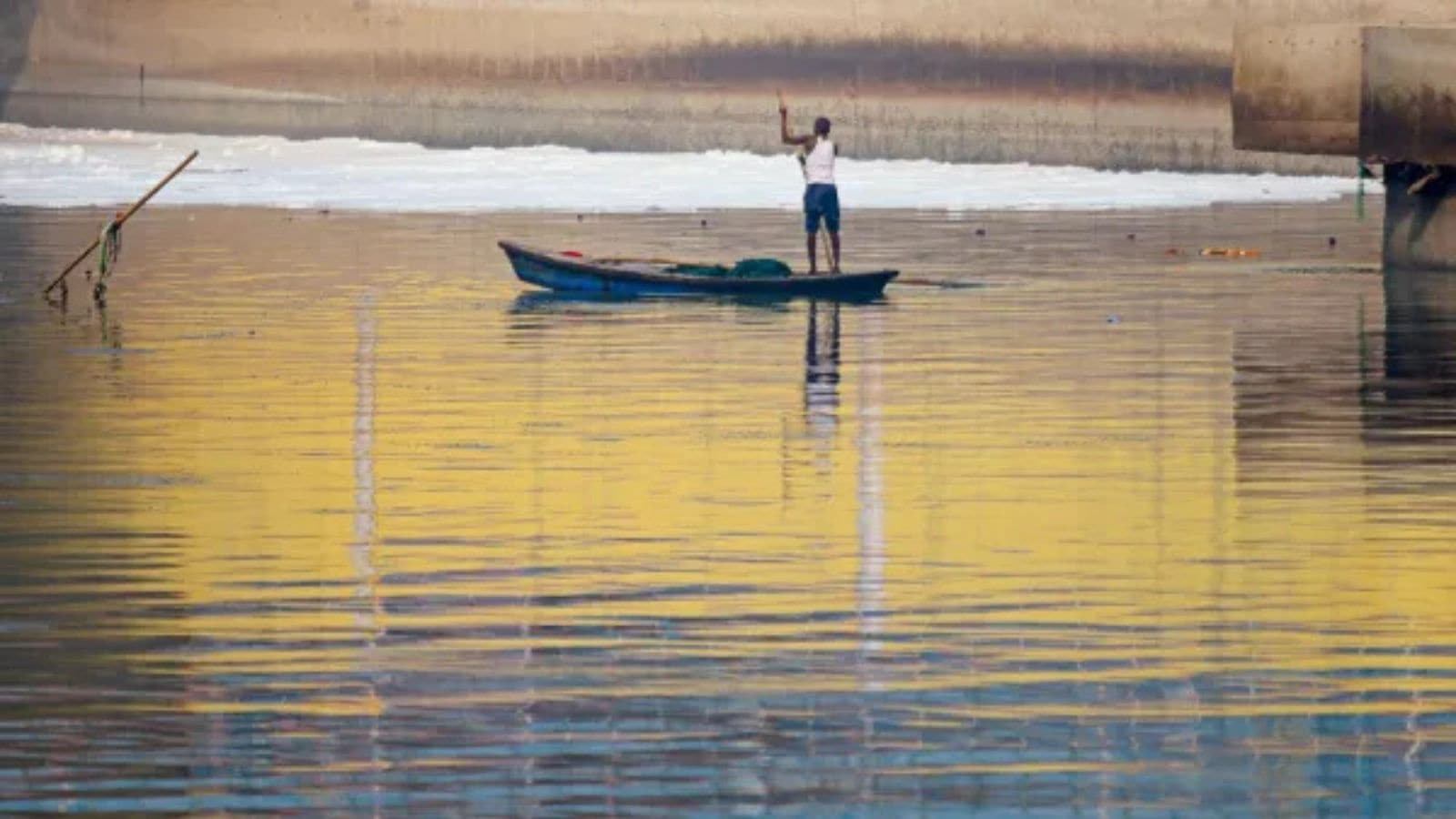Every time Delhi goes through the throes of an election, a large number of issues of great import are suddenly remembered by all the contenders to the throne of the powerless Delhi Assembly. The issue of Yamuna’s pollution and the slow death of the river almost always tops the agenda.
We will try to put forward a brief outline of why all this noise is based on assumptions that have no basis in fact. We will start with the theory that the Yamuna is the lifeline of Delhi.
Story continues below this ad
If we study the location of the seven capitals of Delhi, we can easily see that the Yamuna, aside from irrigating agricultural lands, had little to do with meeting the drinking or other water requirements of the seven capitals that came up in the land between the west bank of the Yamuna and the Aravallis. The first four, Mehrauli or Lal-Kot, Siri, Tughlaqabad and Jahanpanah, were located far from the Yamuna and it could not have been a source of water for domestic use.
The other three also relied on stepwells and wells. The largest stepwell of Delhi was inside the Red Fort. The large lawns and greenery of the Purana Qila and Kotla Ferozeshah are still fed by the water drawn from their baolis. Mughal emperor Shah Jahan’s chief engineer had extended a canal built by Feroze Tughlaq at Hisar by 134 km to flow through the Red Fort and Chandni Chowk. Shahjahanabad had stepwells, wells and water tanks in all large houses in each locality and in almost all large temples and mosques.
The fact that the Yamuna in Delhi did not flow through the heart of the city as it does in Mathura and Agra and as the Ganga does through Varanasi and Patna does not mean that it was never not the heart of the city.
Story continues below this ad
The Yamuna flows over quartz rockbed in Delhi. Even without knowing about the mica and silica that quartz rocks carry, people would have noted that those drinking this water suffered from certain ailments and so they resorted to storing and tapping rain water. The water of the Yamuna would henceforth be used primarily for irrigation, fishing, rituals or regular baths. This would continue till the British set up the Chandrawal waterworks in the late 1890s or thereabouts. About 10 years later, the sewer system was introduced and untreated sewage began to be discharged downstream of the waterworks. Thus, the project to kill the Yamuna was launched. We have continued to walk in the footsteps of those pioneers.
Before the launch of this scheme, each capital met its water needs through deep wells. Persian wheels were installed on many of these once they arrived in India after the 13th century. Delhi was largely semi-arid and the terrain was rocky and so there would have been hundreds of step-wells. More than 20 of them survive to this day. There were rain-fed ponds and lakes — Hauz-i-Shamsi, Hauz Khas, Hauz Rani, Neela Hauz, Naraina Jheel, the huge lake between Tughlaqabad and Adilabad, and hundreds of others.
According to revenue records and satellite data, Delhi had 1,367 water bodies. As per an April 2024 submission by the Delhi government before the Delhi High Court, almost half of Delhi’s officially listed 1,367 water bodies are lost or encroached upon. In addition to these, there were almost a dozen big and small streams originating in the Aravallis between Tughlaqabad and the Kushak Nallah in central Delhi. These included the nallahs that pass through Defence Colony, Sewa Nagar, Lodi Garden and the one that flows next to Dayal Singh College; another has the Delhi Haat built atop it. There are two streams that pass next to the Indian Statistical Institute and through IIT near Katwaria Sarai.
Two of these streams were tapped by Iltutmish to create the Hauz-i-Shamsi and the overflow was directed through the Naulakha Nallah that was to later fill another depression to create the huge lake at Tughlaqabad. It then flowed into the Yamuna towards Badarpur. Two other streams were later tapped by Alauddin Khilji to fill a depression that came to be called Hauz-i-Alai – the Hauz Khas of today.
North of Central Delhi, there was the Sahibi, the Najafgarh Nalla and the overflow from the Jahangirpuri and Najafgarh jheel that also replenished the Yamuna.
All these streams were tributaries carrying fresh water from the Aravallis to the Yamuna. Today, all of them are carriers of waste from scattered factories and untreated sewage and kitchen waste into the Yamuna.
The hundreds of millions spent every year to clean up the Yamuna are a colossal waste of the taxpayer’s money. They will never clean up the Yamuna. The river does not produce any pollution, it is the tributaries that carry the filth into the river. If we are serious about cleaning the Yamuna, we need to clean up the tributaries and stop using the stormwater drains to flush the untreated sewage into the Yamuna.
most read
All we need to do is to create channels that will not allow untreated waste water to flow into the nallahs. Along the banks of the nallahs, every half a kilometre or so, we need to set up small water treatment plants where we pump the water from the nallahs and the water from the channels, treat them both and release them into the nallah. Clean water will begin to flow into the Yamuna and soon the river itself will be clean.
We won’t need hundreds of millions every year and we will not need to import technical knowhow from people who do not understand the scale or nature of the problems that we face in India. The solutions to apparently insurmountable problems are in many cases rather straightforward.
The writer is a filmmaker, oral historian and heritage conservationist


